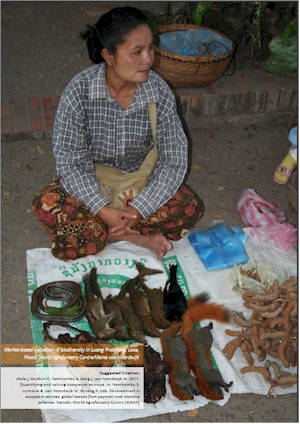| Book Chapter |
 |
|
| Title | Quantifying and valuing ecosystem services | | Author | Joanes Atela, Catherine Muthuri, Sara Namirembe,, Joseph Sang and Meine van Noordwijk | | Editors | Sara Namirembe, Beria Leimona, Meine van Noordwijk and Peter Akong Minang | | Year | 2017 | | Book Title | Co-investment in ecosystem services: global lessons from payment and incentive schemes | | Pages | 1-13 | | Call Number | BC00439-17 |
|
| Abstract: |
Ecosystem Services (ES) depend on natural capital in interaction with human and social capitals. Natural capital, including vegetation and belowground biodiversity supporting soil formation and nutrient enrichment, is important for producing the supporting, regulatory and provisioning services used by humans for economic, social and cultural benefits. Mainstreaming economic development in most developing countries is usually accompanied by a decrease of natural capital and shifts in the social fabric, both affecting ES. Concerns triggered by this change have led to quantification and valuation of ecosystem services often applying globally standardized financial metric as that used for economic progress, so that the genuine economic growth can be monitored. As such, global and national environmental laws and policies now recognize the need for ES quantification and valuation for very many reasons.
Quantification and valuation of ES is a key step in deciding remedial actions for emerging environmental problems such as climate change. For instance, the change of carbon dioxide and fluxes of nitrous oxide and methane expressed in carbon-equivalent units and multiplied with the market price for a unit of certified emission reduction has been used to prioritize climate change remedies and climate change investments. This way, carbon sequestration by forests, agricultural and other natural systems can be expressed in financial terms. Through quantification, it is also possible to link a particular share of greenhouse gasses to particular actors e.g. national governments industries and local farming communities) or particular activities such as deforestation, manufacturing industry, transport etc. |
|